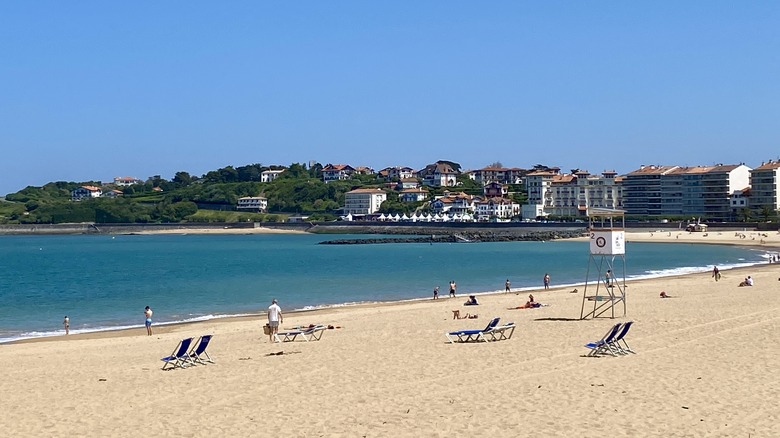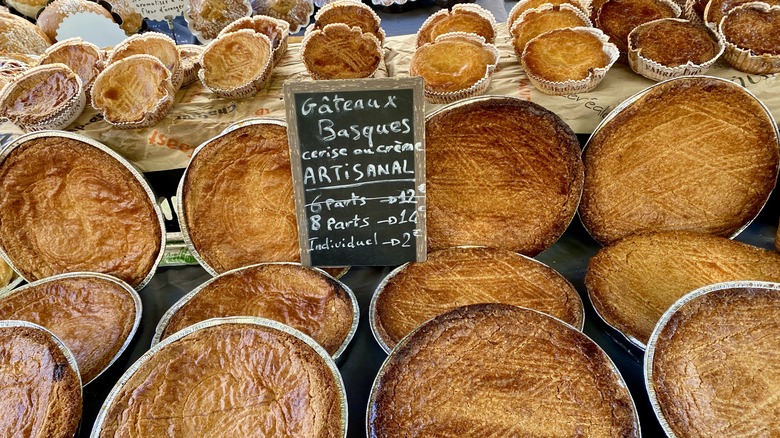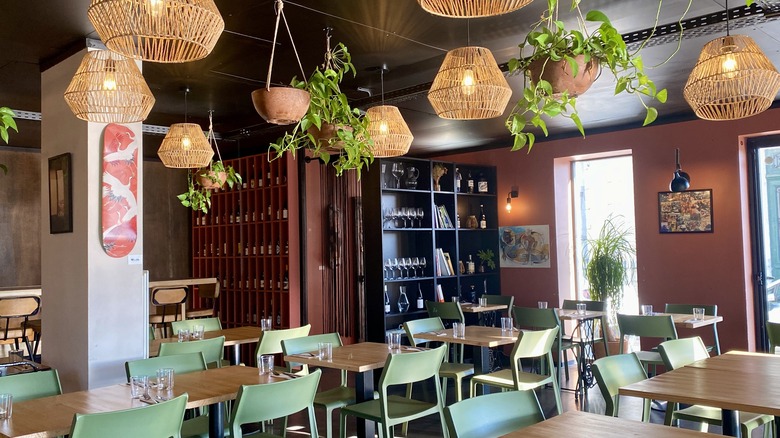Hidden On France's Basque Coast Is A Quaint Village With A Bustling Market Scene And Sprawling White Sand Beach
The South of France needs no introduction. It is famous for glitz and glamour, yachts and the French Riviera. It is France's more casual Southwestern coast, however, that is the sleeper hit. The French Basque coastline extends from the border of Spain up to the city of Bayonne. Unique from the Spanish Basque Coast (especially San Sebastian which a paradise for food, wine and art), France's Basque province of Iparralde feels part Basque, part French, and oozes with charm, especially in the seaside charmer Saint-Jean-de-Luz.
Just a handful of towns populate the French Basque Coast: Hendaye, Ciboure, Saint-Jean-de-Luz, Guethary, Bidart, Biarritz, and Bayonne are the main ones, although some are blink-and-you'll-miss them small. The French regional train, the SNCF, has stops in each of them, and the bus service is quite reliable as well. Having a car, however, is the most convenient way to explore the area, and Saint-Jean-de-Luz is an excellent base. The closest international airport is 15 minutes away in Biarritz, a glamorous city with a storied history. Bordeaux (which has the world's largest wine museum) is a 2-hour train ride or drive, and Paris is less than 5 hours away on the high-speed TGV train. You could also do a day trip from San Sebastian, since it's only a half-hour drive.
With a quaint pedestrian only zone, the town is bordered by the coast, La Nivelle river, and the train tracks. The main beach, 'la grand plage,' is a sprawling white sand beach lined by an elevated promenade that is perfect for a stroll back in time, but the main action is in the heart of Saint-Jean-de-Luz, especially on market days (Tuesdays and Fridays). While a visit is lovely any day of the week, make sure to be there for one of those.
Explore the bustling market scene on the Basque Coast
The indoor-outdoor market in Saint-Jean-de-Luz is located in the heart of the city, anchored at Les Halles. A gathering place for locals to do their weekly shopping, it's also a vibrant market that attracts visitors from up and down the coast, from both sides of the border. On Tuesday and Friday mornings, the indoor areas of the market feature cheese, charcuterie, fresh fish, and specialty pastries, like gâteaux Basques, a typical pastry pie filled with either a cream or cherry filling. Maison Inda Goxobat makes a lemon version that is worth a visit alone.
Outside, stalls surrounding the market are buzzing with people perusing fresh fruit. Pro-tip: Don't touch anything yourself. Let them select the best pieces for you), vegetables, bread, and surprisingly, skillets of paella. On display are several tables featuring Espelette pepper, a popular local pepper that is similar to paprika or Aleppo pepper. You can find it fresh, dried, pickled, or more commonly in a powdered form. Fresh flowers and potted herbs are also available, tucked into the shady sections behind the market.
Directly in front of the market is Nicolas wine shop. This is a great place to pick up some local wines, particularly from the Irouléguy region. Located in the French Basque Country, about an hour away from Saint-Jean-de-Luz, the region produces excellent full-bodied reds, crisp whites, and a rosé that is closer to a Spanish profile than the more familiar rosés from Provence.
Where to find the waves, eat, and stay
While la grande plage is the main beach, there are actually four additional beaches including surf favorites Cénitz (great for beginners) and Lafiténia (for those who already have skills under their belt). La grande plage is protected from the waves, so best for families. If the weather is nice it's the perfect place to lounge with a picnic lunch plucked straight from the market. In addition to the surfing beaches, Erromardi and Mayarco are the remaining beaches and all four are located a little out of town, next to popular camp sites.
Beyond the market and the beach, explore the town and try local specialties like the almond macarons from Maison Adam. Not to be confused with the typical French macarons, these are more like a soft almond cookie and date back to 1660. The Adam family was commissioned to make the macarons for the wedding of Louis XIV and have been a staple in the region ever since. Le Komptoir des Amis is a shining example of farm-to-table cuisine. They change the menu twice daily, for dinner and lunch and partner with over 50 local suppliers and artisans to create a reasonably priced prix fixe menu (€22, or about $25 USD at the time of writing). Another must-visit stop for a regional sweet is Dunes Blanches, a light as air puff pastry filled with air. Get a box of six, minimum, trust us.
If you have the time to plant some roots and stay longer, The Madison is a boutique hotel with rustic Basque charm. Bizipoz, a play on the Basque words for life and joy, is centrally located and features live music regularly. Further out on the point, La Rēserve is a sprawling property with stunning sea views.


